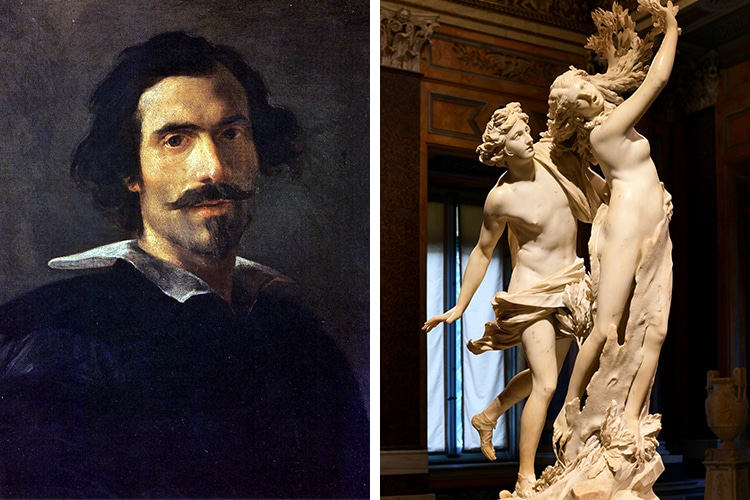
As the Renaissance came to an end, a new, more elaborate style took its place. From the 17th to the 18th century, artists in Europe embraced the Baroque movement: an approach characterized by an ornate, over-the-top aesthetic that evokes ethereality and aims to inspire awe. One of the artists who helped develop this style was an Italian named Gian Lorenzo Bernini.
Originally from Naples, he was considered a prodigious talent from an early age, eventually moving to Rome to develop his career. There, he encountered wealthy patrons who commissioned him to create numerous sculptures. As he worked, his style developed into something far more ornate and dramatic than his predecessors, featuring emotional narratives and realistic figures in dynamic twisting poses. In addition to his sculptural practice, he also beautified Rome through his several architectural projects, including Saint Peter's Square and several lavish fountains.
Here, we will learn more about Bernini's life and art.
Who Was Bernini?
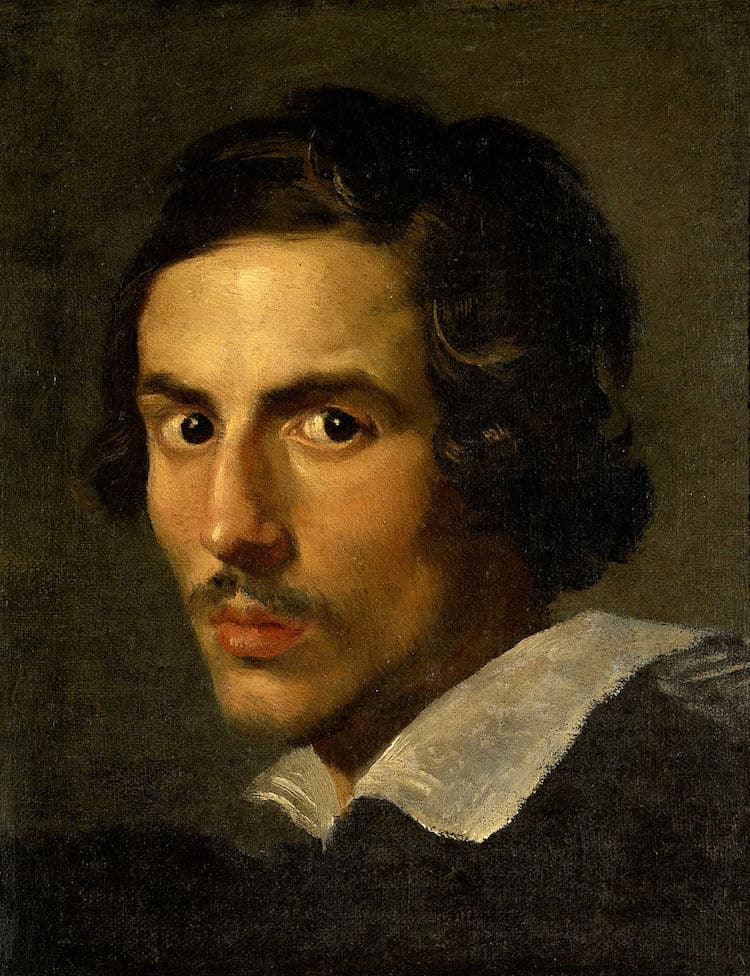
Gian Lorenzo Bernini, “Self-Portrait,” c. 1623 (Photo: Galleria Borghese via Wikimedia Commons, Public domain)
Full Name | Gian Lorenzo Bernini |
Born | December 7, 1598 (Naples, Italy) |
Died | November 28, 1680 (Rome, Italy) |
Notable Artwork | David, Apollo and Daphne |
Movement | Baroque |
Gian Lorenzo Bernini (1598–1680) was a prominent Italian sculptor, painter, and architect who is credited with developing the Baroque style of sculpture. Originally from Naples, he was regarded as a child prodigy. His father—a Mannerist sculptor—helped develop his talents and the pair worked together on several early commissions.
When Bernini relocated to Rome he caught the attention of Pope Paul V, who was impressed with the young artist's talents. Soon enough, he found patronage under Cardinal Scipione, who was an avid art collector and patron of Caravaggio. This relationship helped fund some of Bernini's most recognizable sculptural works. In addition to mastering marble, he was also an accomplished painter and successful architect.
Sculpture
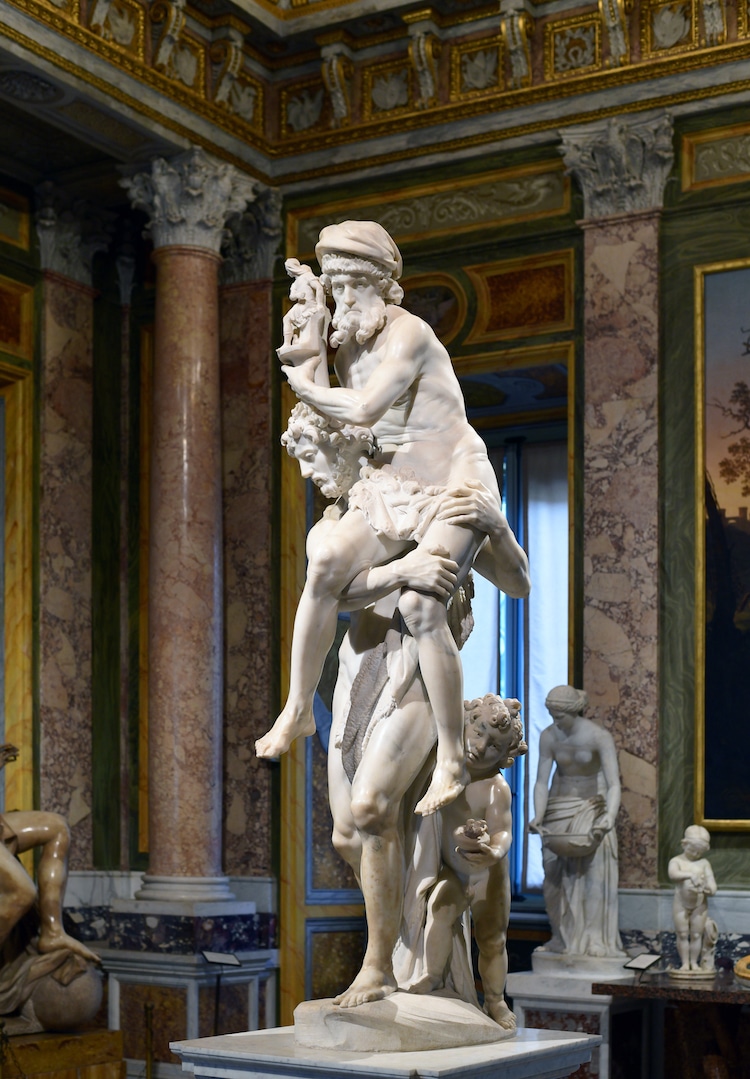
Gian Lorenzo Bernini, “Aeneas, Anchises, and Ascanius,” 1619 (Photo: Archives via Wikimedia Commons, CC BY-SA 4.0)
Bernini's approach to sculpting was unlike any of his predecessors. He created realistic, dynamic works of art set in dramatic narratives which made full use of the numerous perspectives sculpture brings.
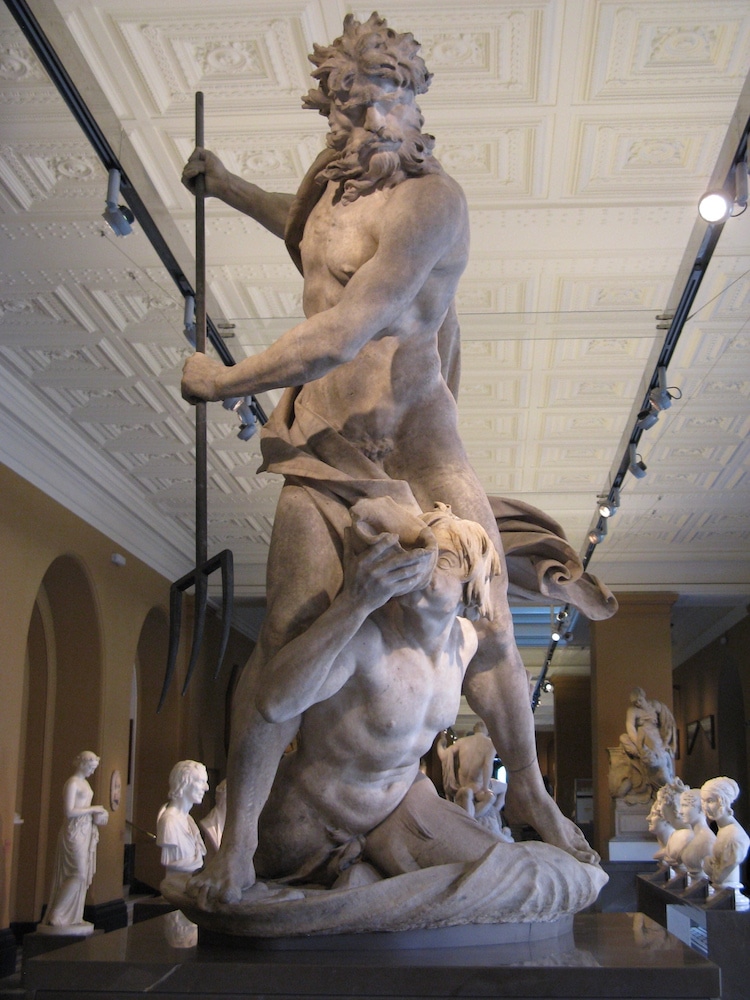
Gian Lorenzo Bernini, “Neptune and Triton,” 1622–1623 (Photo: Yair Haklai via Wikimedia Commons, CC BY-SA 3.0)
A master of human anatomy, he rendered realistic figures that were infused with energy and power. His characters are often depicted in twisting poses wearing emotional expressions.
Architecture
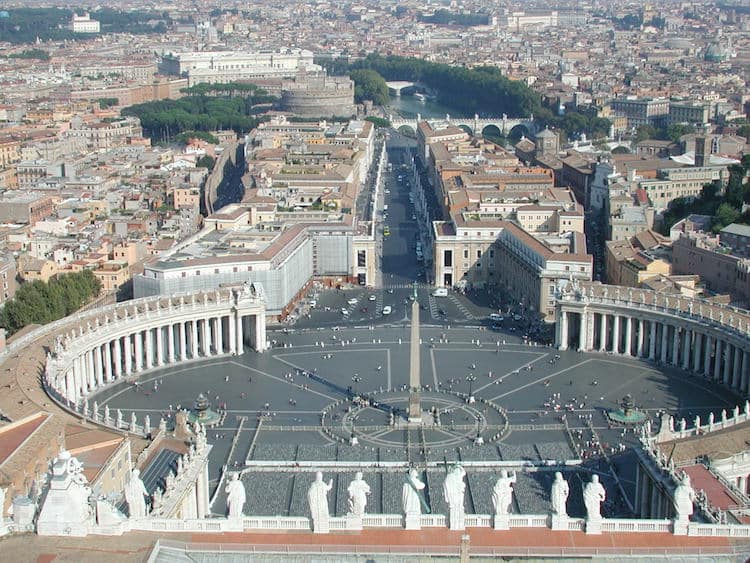
Saint Peter’s Basilica, Rome (Photo: Lukask via Wikimedia Commons, CC BY-SA 3.0)
In addition to being a master of sculpture, Bernini was a highly successful architect who worked on projects throughout Rome including Roman palaces and residencies as well as sacred buildings. His intention in architecture was the same as in his sculpture: to inspire a sense of awe.
Perhaps his most famous urban projects are Saint Peter's Square and the quadruple colonnade encompassing Saint Peter's Basilica (created between 1656 and 1667). Both of these initiatives are highly Baroque in style for how they relate to the environment and merge with the rest of the city.
Bernini also created several fountain projects that were highly popular during the Baroque period for the dramatic use of water. Fontana dei Quattro Fiumi in Piazza Navona and Fontana del Tritone are two of his most significant fountains that can still be seen in Rome today.
Famous Works of Art
The Rape of Proserpina, 1621–1622
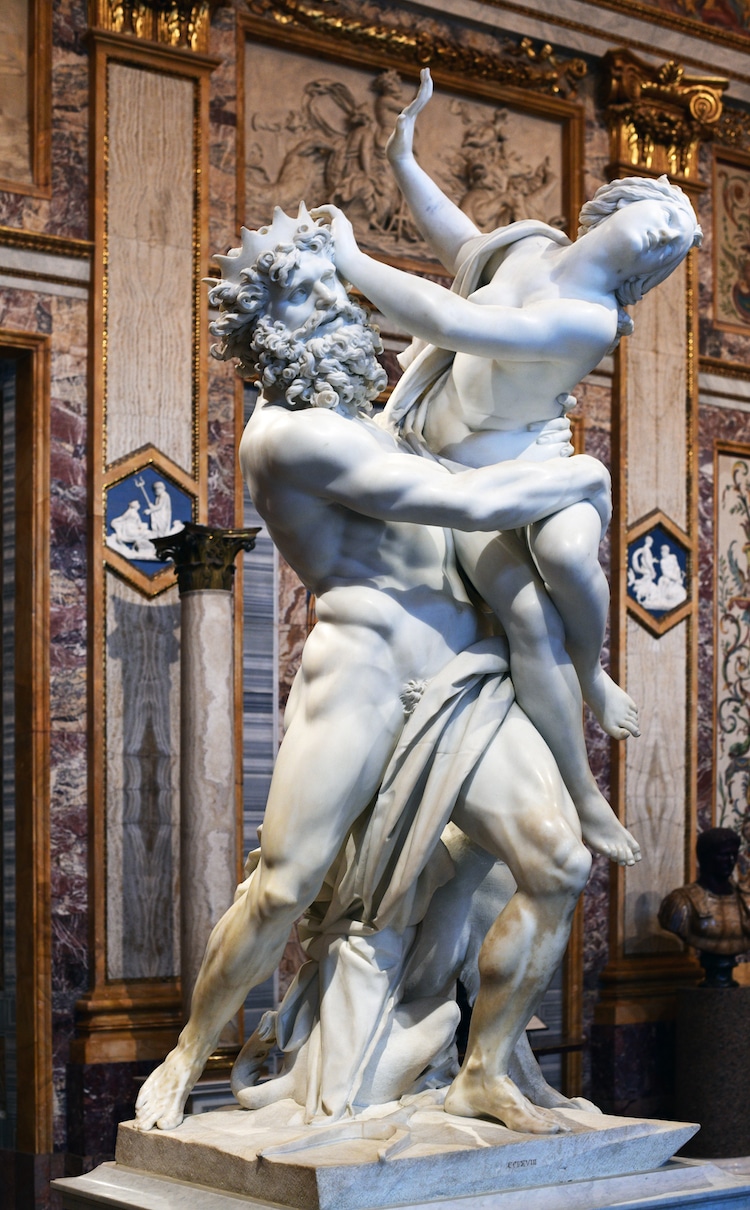
Gian Lorenzo Bernini, “The Rape of Proserpina,” 1621–1622 (Photo: Architas via Wikimedia Commons, CC BY-SA 4.0)
Bernini completed The Rape of Prosperina between 1621 and 1622 when he was just 23 years old. Measuring nearly 7.5 feet tall, this large-scale piece portrays the dramatic abduction (in the case of its title, the term “rape” refers to the act of kidnapping) of Proserpina by Pluto, god of the underworld.
Here, Bernini masterfully transformed the Carrara marble into supple skin, textured hair, and drapery. His finesse with the material is evident in the numerous details, such as the veins appearing in Pluto's muscles as he strains to overpower her, and in the plushness of Proserpina's skin in the areas where her abductor holds her.
Apollo and Daphne, 1622–1625
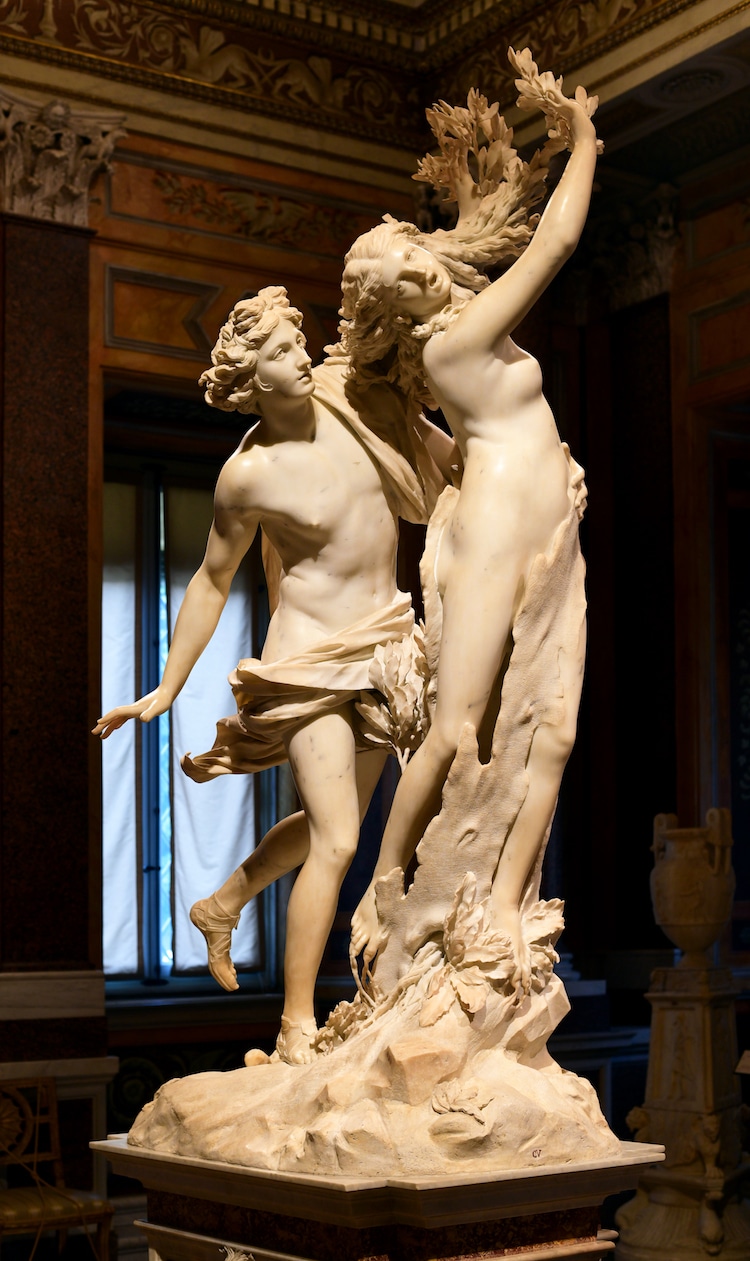
Gian Lorenzo Bernini, “Apollo and Daphne,” c. 1622–1625 (Photo: Architas via Wikimedia Commons, CC BY-SA 4.0)
After The Rape of Proserpina, Bernini completed Apollo and Daphne, another large-scale masterpiece based on a classical myth. Here, the god Apollo chases after the nymph Daphne, and she—in an effort to escape him—is depicted at the moment she begins her transformation into a tree. Bernini again relies on contorted positions that emphasize the physical and psychological aspects of the story. Apollo, portrayed mid-run, looks amorously at Daphne. In contrast, she has her whole body turned away, her mouth opens in an expression of pain or fear.
Bernini utilized the three-dimensionality of sculpture particularly well here, displaying different elements of the story depending on where the audience views the statue. At the base, Daphne's feet appear to be morphing into tree roots, and above her head are her arms that are transforming into leafy branches.
David, 1623–1624
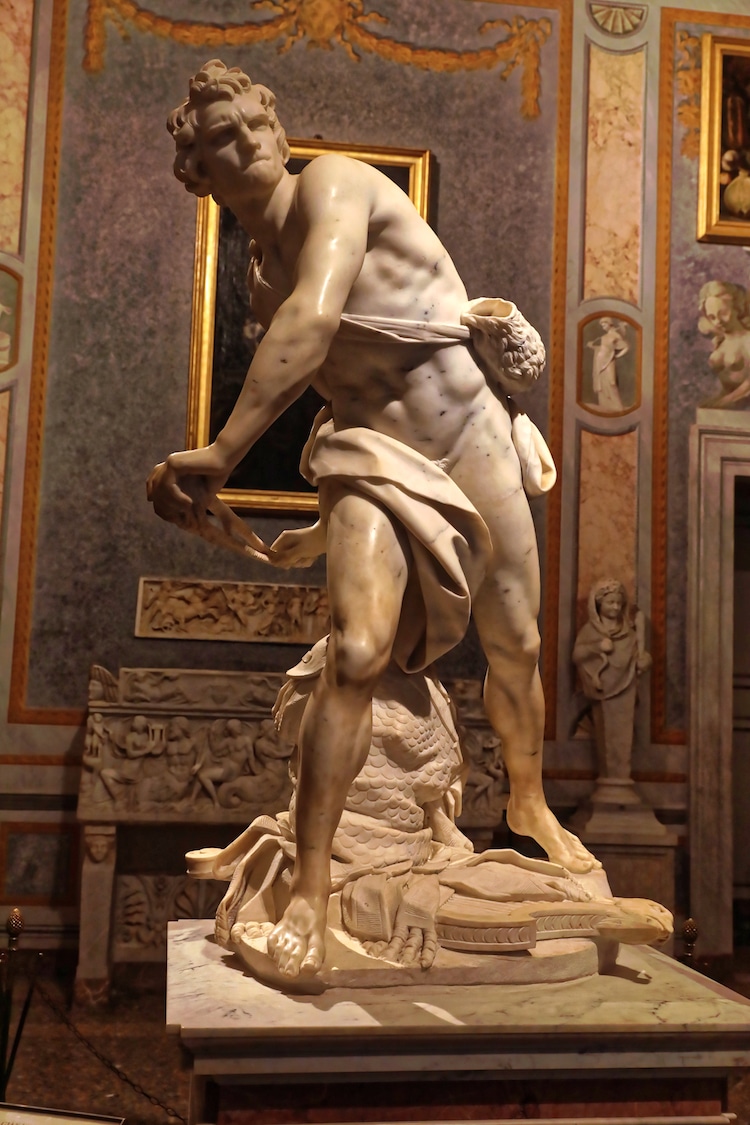
Gian Lorenzo Bernini, “David,” c. 1623–1624 (Photo: Burkhard Mücke via Wikimedia Commons, CC BY-SA 4.0)
Almost 200 years after Donatello created his bronze David and about a century after Michelangelo's David, Bernini finished his own interpretation of the iconic Biblical tale. Interestingly, Bernini chose to depict David in the midst of his battle with Goliath—something neither of his predecessors did.
Bernini's David is standing legs apart, torso twisted, and arms positioned backward to prepare the sling used to slay Goliath. His expression is set in deep concentration, lips drawn tight and brows furrowed together. This unique take on a popular subject was revolutionary for how it implies movement and energy through the pose and face of the figure.
Later Life and Legacy
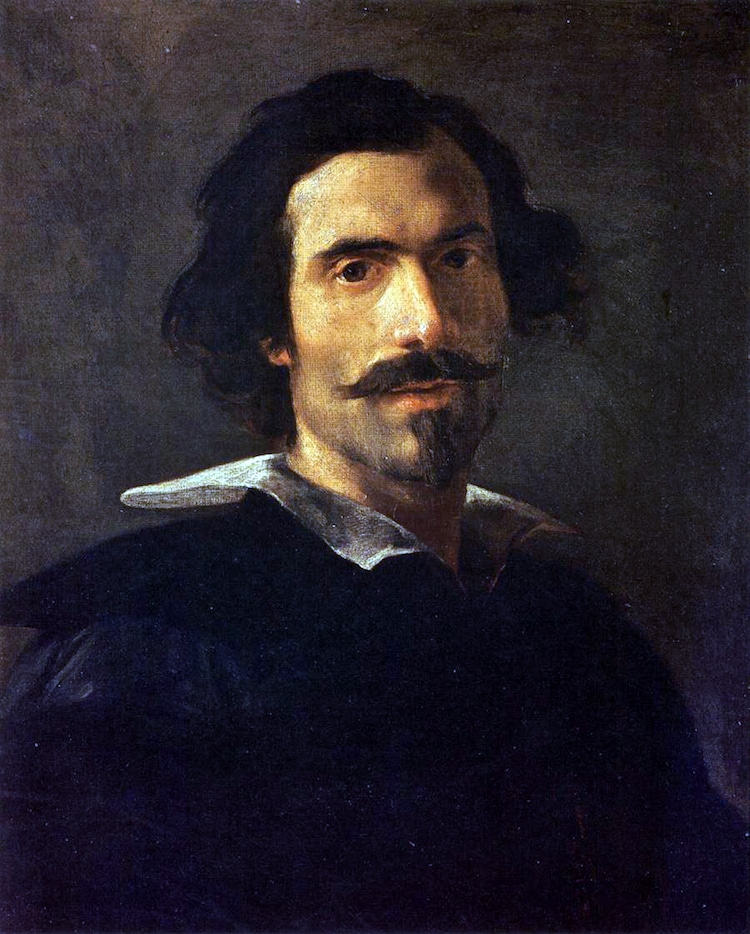
Gian Lorenzo Bernini, “Self-Portrait,” c. 1635 (Photo: Uffizi via Wikimedia Commons, Public domain)
At the height of his career, Bernini was the most famous artist in Europe. His extraordinary sculpting prowess challenged traditional conventions and paved the way for new approaches to the discipline. Additionally, as an architect, he transformed the landscape of Rome through his many projects. His vision was so dominant and long-lasting that it has remained mostly untouched to this day.
While his professional life was mostly unblemished, his personal life had some twists and turns. Most notably, when Bernini was in his 30s he had an affair with a married woman named Costanza. She later began a relationship with Bernini's brother, Luigi, and when Bernini found out, he threatened his brother's life and ordered a servant to slash Costanza's face. Due to his influence and popularity as an artist, Bernini was pardoned by the pope for his crime while Costanza was jailed for adultery.
After this incident, Bernini appeared to have reformed his behavior, becoming highly religious and devoted to his faith. He remained active, completing commissions, until his death at the age of 82. Bernini's legacy had a huge impact on the Baroque movement, on Rome, and most of all, on sculpture.
Books About Bernini
Frequently Asked Questions
What is Bernini famous for?
Bernini is famous for developing the Baroque style and for creating numerous significant sculptures, fountains, and architectural works.
What are Bernini's three most famous pieces of art?
Three of Bernini's most famous works of art are The Rape of Proserpina, Apollo and Daphne, and David.
Is Bernini a Renaissance artist?
Bernini is a Baroque artist.
Related Articles:
Tracing the Turbulent Life of Baroque Painter Caravaggio
Why Michelangelo’s ‘David’ Is an Icon of the Italian Renaissance
15 Beautiful Cathedrals Around the World That Are Full of History and Spirituality






















































































